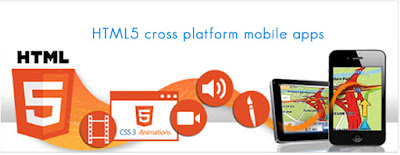
An HTML5 mobile application is a web application with this version of the standard web content for smartphones,tablets and other handheld devices.HTML5 developed designed allows more complex than earlier versions of the standard functions,which means that files created with it,can be more like applications contain similar.Moreover,almost all popular mobile devices support HTML5,which makes application development for multiple mobile platforms easier,because the necessary code is written only once.
Coded to be operated via the Internet to a variety of device types HTML5 applications are an example of a cross.As HTML5 is a Web standard accepted,you can create applications that are not only compatible with mobile devices,but also for desktop and laptop browsers for a seamless experience across all of a user's devices.Also,because HTML5 mobile applications run from the Web and not stored locally,users do not need to see updates to content or use the application download.
However,HTML5 mobile applications not without reservations.Some HTML5 applications may not work well and can not run intermittently in connectivity. Even when connections are reliable HTML5 applications are not as efficient as native applications and can run slower, Applications which are suitable for HTML5 least include those repeatedly that require access sensors and power peaks and low latency.Research at the University of Syracuse has also shown that HTML5 frameworks are vulnerable to code injection attacks normally.
Use corporate developers to create HTML5 less time-consuming, expensive and complicated application,making it easy to support multiple devices typically BYOD (Bring Your Own Device) business environment.HTML5 also private developers to reach more potential customers do not have to rewrite applications for each type of device is always a product in multiple application stores.As the rule that HTML5 applications are delivered entirely through the browser mobile device.Another approach,called hybrid mobile app uses HTML5 code from a container or container program is written in native code mobile phone operating system, launched.




